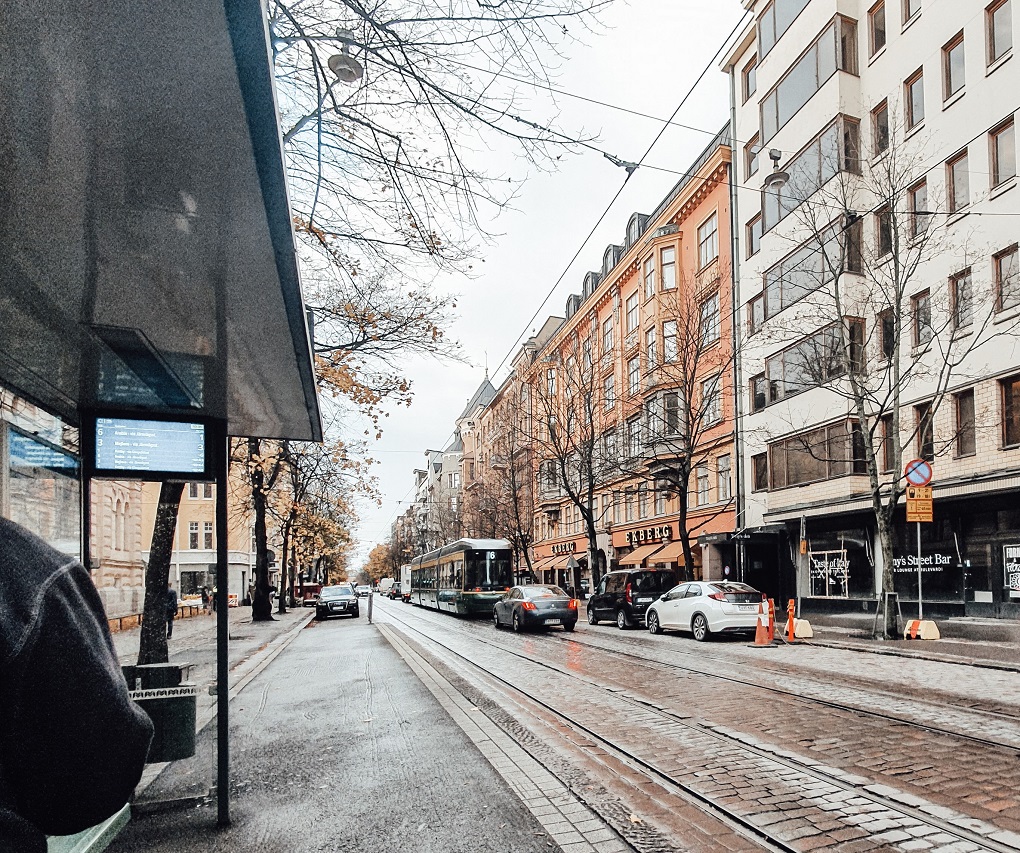Helsinki, 2 degrees
Architecture is the learned game, correct and magnificent, of forms assembled in the light.
As many events have been canceled this Christmas, it's an ideal moment to finalize my blog series about Helsinki's Art Nouveau / Jugend style architecture - now more than ever it's time to discover new places online or if you're in Helsinki: your local surroundings! So why did I write this series? Some time ago, I received a request for my blog. One of my followers on Instagram actually asked me to write about Helsinki's Art Nouveau and/or Jugend style architecture. I do get this wish quite a lot, and I was very surprised to notice that I had merely mentioned this incredible architectural style on the blog before - because it is for sure one of the things that I love the most about Helsinki: its high quantity of this castle-like buildings! Fifth up as an example of Art Nouveau / Jugend districts in Helsinki is Punavuori!
Koska monet jouluiset tapahtumat ovat tänä vuonna peruttu, nyt on oiva hetki viimeistellä Jugend -blogisarjaani - näin saat lisäsyyn tutustua paremmin Helsinkiin! Jonkun aikaa sitten eräs Instagram -seuraaja toivoi Jugend -aiheista blogisarjaa. Hän ei todellakaan ollut yksin, koska suhteellisen usein minulta nimenomaan toivotaan Jugend -sisältöä blogin puolelle. Yllätyin kun huomasin, että olin siitä kovin vähän blogissa kirjoittanut aikaisemmin - koska linnamainen arkkitehtuurityyli on yksi Helsingin ominaisuuksista, joista pidän eniten! Eli nyt on erinomainen aika välittää teille hieman rakkauttani kotikaupunkiani kohtaan! Viidentenä Jugend -kaupunginosana esittelen teille Punavuoren kaupunginosaa!
Punavuori
Kamppi and Punavuori are the two oldest working-class areas in Helsinki, As the city grew at the end of the 19th century, economic pressure began to impact these areas as well. Wooden houses were demolished and replaced by four or five floor high stone houses. About a quarter of the buildings here are constructed between 1895 and 1915. Impressive buildings can be found especially around Bulevardi and Fredrikinkatu streets. I used to have a classmate when studying for my bachelor of tourism that had a home on Bulevardi - in Sanmark House. I will never forget how it felt to walk in her home, it felt like walking in a museum. What I remember the best, is the window sill that was big and wide enough to sit on - almost like an aperture. I recall thinking that if I would live there, that is the exact place where I would write a book - the seat was so inspiring, and the view down onto the idyllic Bulevardi (boulevard in Finnish) was priceless!
Kamppi ja Punavuori ovat Helsingin vanhimpia työläisalueita. Kun kaupunki kasvoi 1800-luvun loppupuolella, myös nämä alueet muuttuivat. Puutalot saivat väistyä kivikerrostalojen tieltä. Alueen rakennuksista noin neljäsosa on rakennettu 1895-1915 välisenä aikana. Vaikuttavia Jugend -rakennuksia voi nähdä esimerkiksi Bulevardilla ja Fredrikinkadulla. Kamppi-Punavuori -alue tunnetaan ehkä parhaiten Vanhasta kirkkopuistosta, eli tuttavallisimmin Ruttopuistosta, jonne haudattiin vuoden 1710 ruttoepidemian jälkeen yli tuhat taudin uhria. Kampin alue oli tuolloin vielä metsäistä ja asumatonta ja siellä sijaitsi lähinnä helsinkiläisten peltoja ja puutarhaviljelmiä. Opiskeluaikoina minulla oli luokkakaveri, jolla oli koti Bulevardilla - Sanmarkin talossa. Muistan hänen luonaan ajatelleeni, että hänen kotinsa oli kuin museo - niin kaunis! Erityisesti jäi mieleen asunnon upea ikkunalauta/syvennys, jolla oli näkymä Bulevardille. Silloin mietin, että jos itse olisin asunut asunnossa, niin kyseisellä paikalla olisin varmasti kirjan kirjoittanut - niin inspiroiva se oli!
Sanmark House / Sanmarkin talo
Osoitteessa Bulevardi 13 seisoo vaikuttava Jugend -rakennus Fredrikinkadun ja Bulevardin kulmassa: Sanmarkin talo. Se on Grahn-Hedman-Wasastjerna -kolmikon suunnittelema ja valmistui vuonna 1903. Upea linna on tyypillinen Jugend -rakennus siinä mielessä, että siinä on torni ja useita hienoja yksityiskohtia!
Other Art Nouveau favorites on Bulevardi include the Falken, Huvilinna, and Otava buildings!
Muita Jugend -suosikkejani Bulevardilla ovat Falken, Huvilinna ja Otava -rakennukset!
Vanha Poli
Ensimmäinen matkailuun liittyvä työpaikkani sijaitsi Punavuoressa, osoitteessa Lönnrotinkatu 29. Vanha Poli Satakielen korttelissa on pysäyttävä nähtävyys! Se on ollut kulttuurihistoriallinen, taidehistoriallinen ja kaupunkihistoriallinen nähtävyys jo vuodesta 1903. Mikä talo! Mikä talo? Linnahan se on. Katso tuota tornia ja parveketta! Uskomaton! Harmaan kivilinnan graniittiseinät ovat niin karkeat, että niitä on melkein pakko koskettaa; suippokaariset ikkunat ja jyhkeät ovet. Sisällä runsaiden ornamenttien kimarat, joissa värit ovat vahvat, tyylitellyt luontoaiheiset kuviot kiehtovat yhä. Tällainen komeus on syntynyt, kun hienostunut eurooppalainen Art Nouveau on kohdannut suomalaisen kansallisromantiikan ja muuttunut jugendiksi. Kivilinna kertoo kansakunnan juurien etsinnästä, heräämisestä kansalliseen itsetuntoon. Kyse on Helsingin rakastetuimpia jugendtaloja. Sen suunnittelivat arkkitehdit Karl Lindahl ja Walter Thomé Teknillisen yliopiston ylioppilaskunnan taloksi. Tänään rakennus on hotelli, kuten se oli myös vuonna 2007, kun itse työskentelin siellä! Nyt myöhemmin olen kuullut, että talossa kummittelee. Onneksi en siitä tiennyt mitään, kun tein talossa ilta- ja yövuoroja vastaanotossa ja ravintolassa.
Do you know this architectural style? What is your favorite Art Nouveau / Jugend style building?
Tunnetko Jugend -arkkitehtuurisuuntauksen hyvin? Mikä on sinun Jugend -suosikkirakennuksesi?










How beautiful! These designs are really incredible. Thank you for sharing them!
ReplyDeletethe creation of beauty is art.
Thank you, I am glad that you liked them!
Deletexxx
E